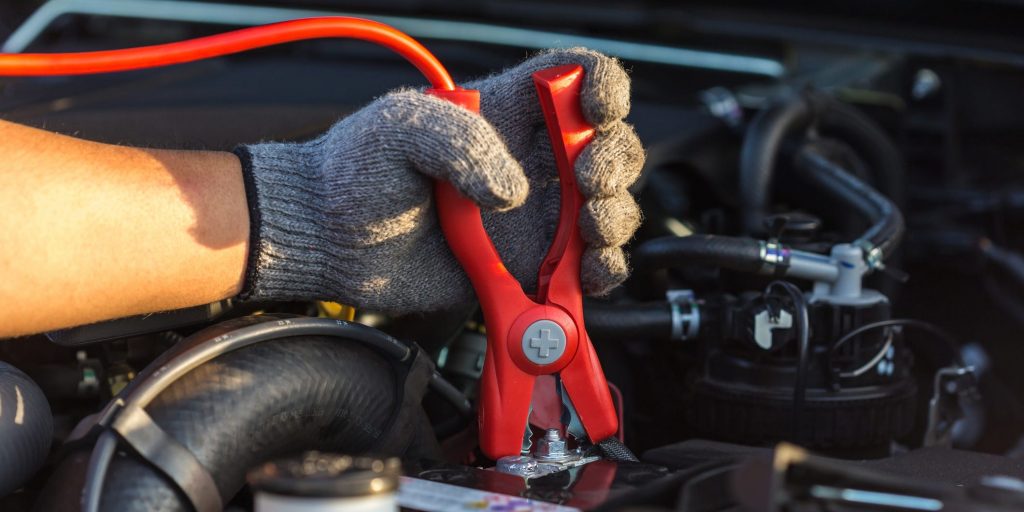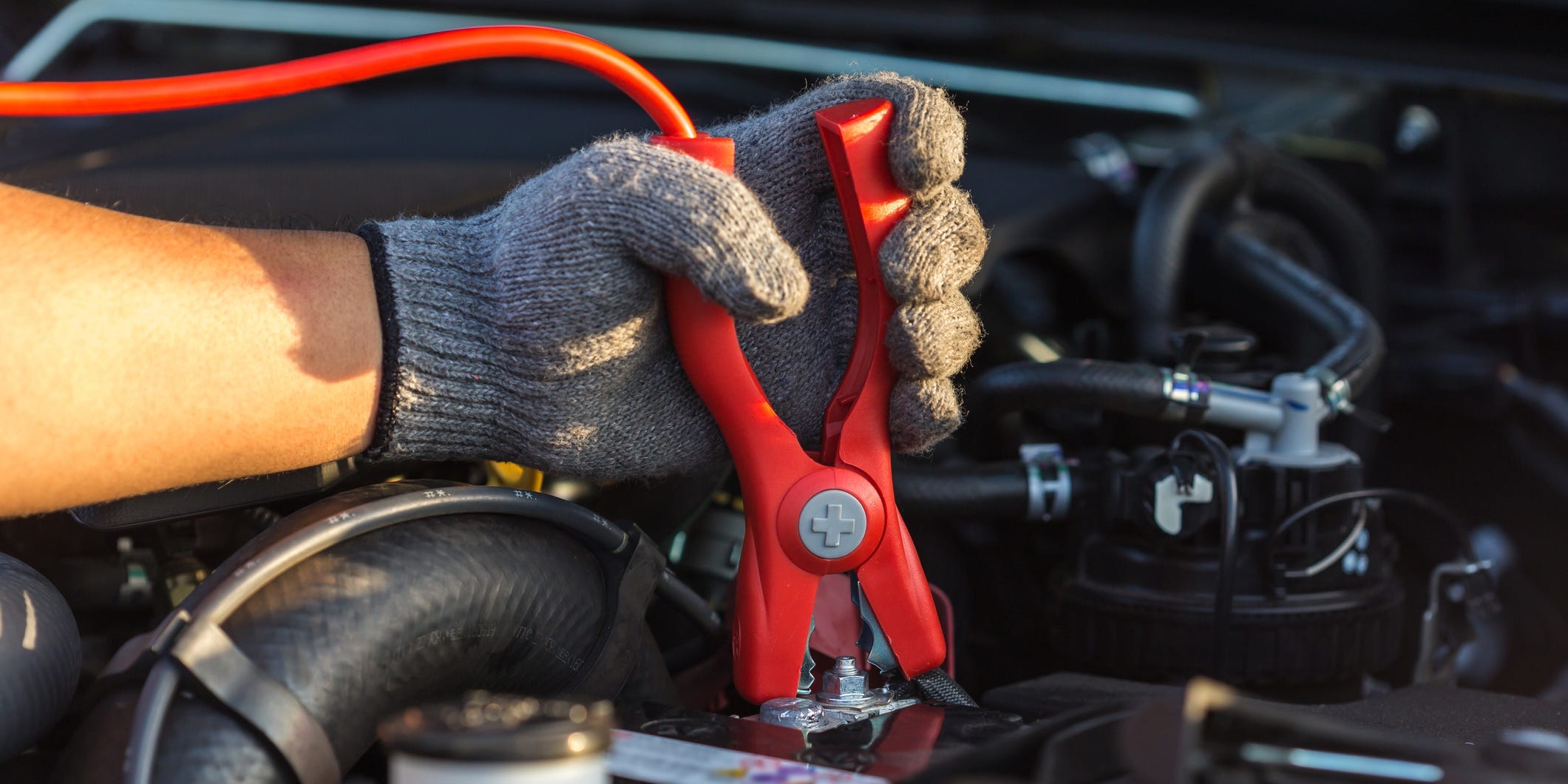
PhanuwatNandee/Getty Images
- If your car battery is dead, you can jump start it with jumper cables and a second working vehicle.
- First, correctly identify the battery terminals and then, connect jumper cables in the right order.
- Once your car running again, you may need to see a mechanic to diagnose and fix the problem.
- Visit Insider's Home & Kitchen Reference library for more stories.
We've all been there. You walk out to your car, get in, turn the key – and nothing happens. Maybe you hear just a clicking noise, but the engine doesn't start.
Although there are many problems that can cause a no-start, a dead battery is one of the most common culprits. If you forgot to turn off your headlights or left the radio on for a long time with the engine off, you probably have a dead battery. It happens!
But you may be able to get your car running by jump-starting it. Jump starting a car is the simple process of using jumper cables to connect the working battery of another car to your car's dead battery. Below is everything you need to know to safely jumpstart your car so you can start the engine again.
How to tell your car battery is dead
Before you jump your car, you need to determine if a dead battery is the cause of your troubles.
The battery powers all the electrical components of the car, so look for a tell-tale sign: Check the headlights. If they are dim or don't work, it's probably a dead battery. If the headlights look bright and all the interior electronics and lights function, your battery may be fine and you likely have a different issue.
You may also experience slow cranking or the engine barely starting, both can be indicators your battery is on its last legs. Some cars have a battery-specific warning light to help alert you to a problem. Once you're sure the battery is the problem, you're ready to jump your car.
How to use jumper cables
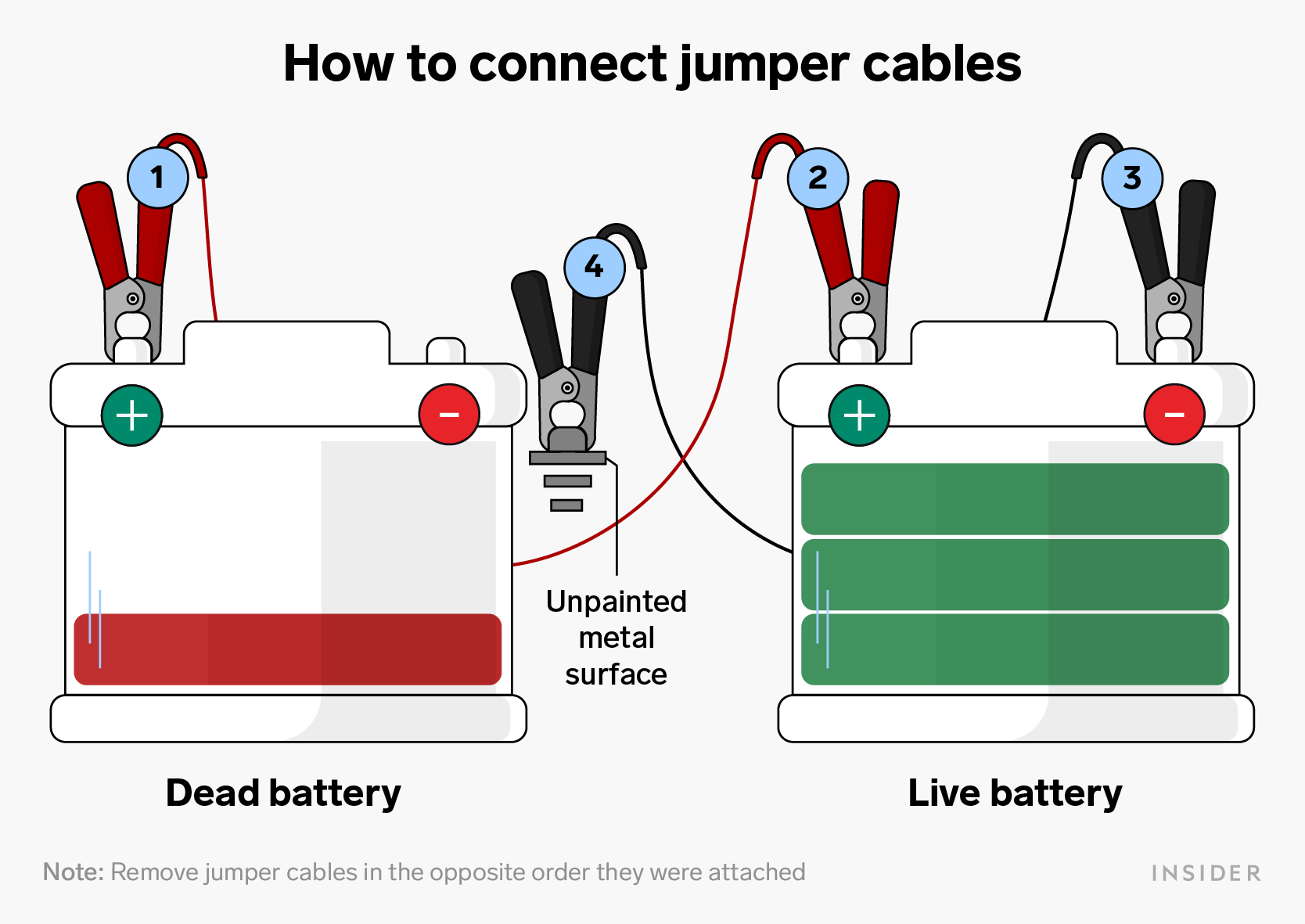
The most important thing about jumper cables is making sure to connect the color-coded metal clamps to the battery terminals in the correct order.
The terminals are the two metal stubs that stick out of the top or side of each battery and have wires connected to them. The battery terminals may be covered by plastic covers - if so, remove them.
To determine which battery terminal is positive and which one is negative, look around the terminals. All batteries have a "-" or a "+" next to each terminal. Black is the universal color for negative and red always indicates positive, so the terminals may be color-coded.
1. Connect red to dead. Each end of the jumper cable has two connector clamps, a red one for positive and a black one for negative. Take one of the red positive connector clamps and attach it to the positive terminal of your battery. Do not remove any existing wires or connectors, just clamp it over the metal terminal.
2. Connect red to the donor battery. Connect the other positive red jumper cable connector to the positive terminal of the good battery.
3. Connect black to the donor battery. Take one of the black, negative jumper cable connectors and clamp it to the negative terminal of the good battery.
4. Connect black to metal. Now take the other negative connector of the jumper cable and clamp it to a clean, non-painted, non-moving part of the engine or metal frame of your car. DO NOT connect it to your negative battery terminal. That could cause sparking or fire.
Once you've successfully restarted your car, it's key to remove the clips in the correct order to prevent sparking or fire.
Always remove jumper cables in the reverse order in which you attached them. First remove the black clamp from your car, the black clamp from the donor car, the red clamp from the donor car, and then the red clamp from your car.
Safety tips for jump starting a car
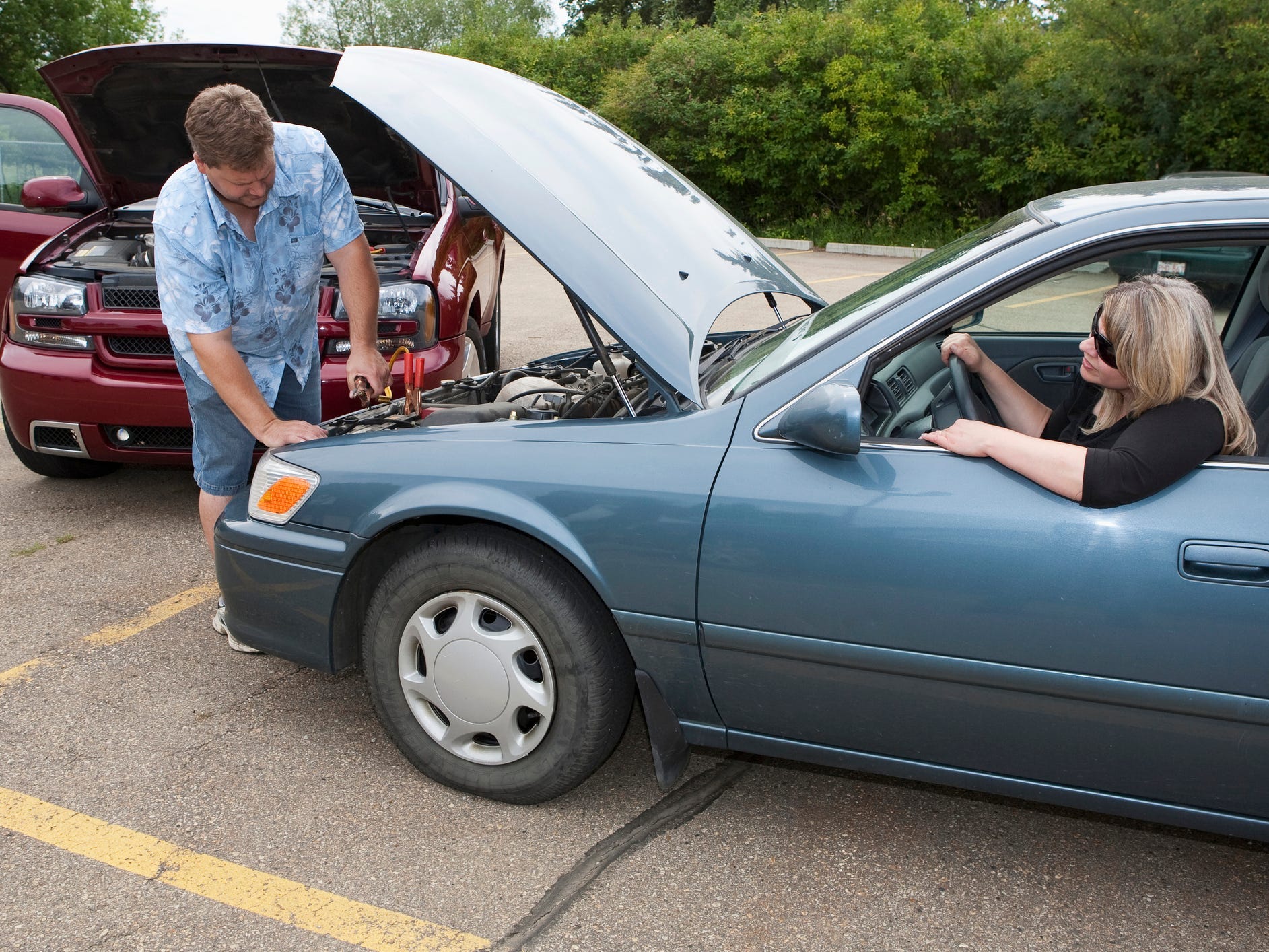
Linda Patterson / Design Pics/Getty Images
If done incorrectly, jump-starting a car can be dangerous and it can also damage both vehicles' sensitive electronic systems. Always follow these safety tips:
- Make sure road conditions are safe. If your car is on a busy street, it may not be safe to jump-start it since the other car needs to be facing or next to your car.
- Inspect jumper cables for any damage before use. Damaged cables can short out if they touch metal or themselves
- Never try to jump a damaged, corroded or leaking battery.
- Don't try to jump your car if it has overheated (the "temp" or "temperature" light is on).
- Don't try to jump your car if it has lost or is low on oil (the "oil" light is on).
- Always be sure to confirm positive and negative battery terminals on both vehicles.
- Always hook up jumper cables with both vehicles off.
- Do not touch the ends of the jumper cable to each other or to any other part of the car.
- After jump-starting, be very careful when removing jumper cables, watch for fan blades and fan belts.
What if it doesn't work?
Jump starting a car simply charges the battery. If the issue is with the starter or starting system or a mechanical problem with the engine, it will not start, even when jumped. If the car starts, runs for a few minutes, then dies again, the problem is most likely with the alternator or charging system.
It may help to gently wiggle the cable clamps around and squeeze them tight to ensure a strong connection, then try the process again. Also, you may need to slightly rev the car with the working battery for a few minutes to strengthen the charge. Do this by simply pressing on the gas pedal while the car is running and in park.
What to do after you jump your car
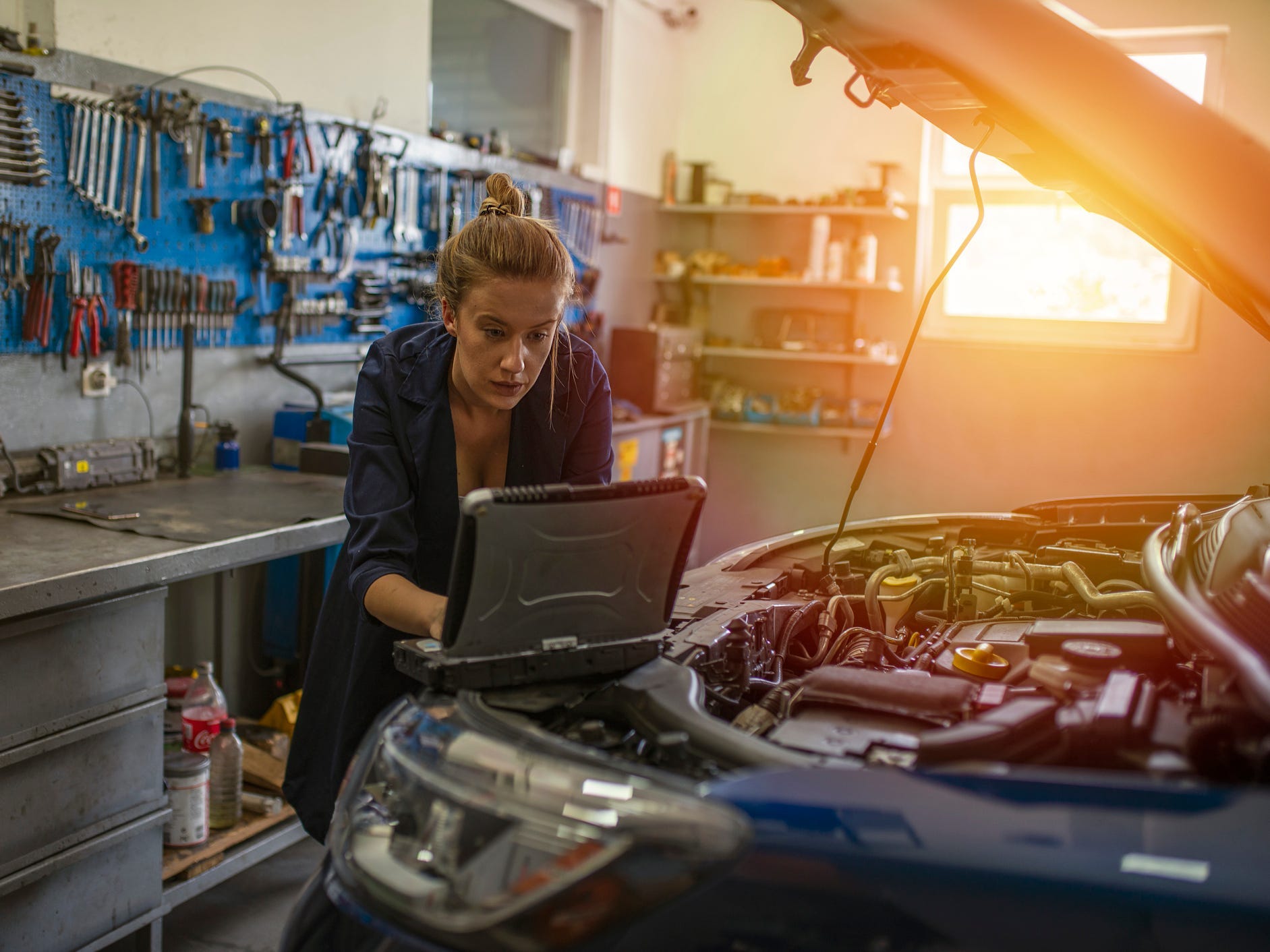
dragana991/Getty Images
After your car is running, carefully remove the jumper cables in the reverse order you hooked them up. Do not turn your car off as it may not start again.
First, remove the negative jumper cable from your engine block, then remove the negative jumper cable from the good battery. Disconnect the positive jumper cable from the good battery and finally, disconnect the positive jumper cable from your battery.
If you know the problem was caused by leaving the lights on or another simple power drain issue, then jump-starting the car and running it will recharge the battery and fix the problem.
For any other reason, or if you don't know why your car didn't start, you need to get the car inspected by a mechanic as soon as possible. If the battery is bad, the car will run until you turn it off but will require a jump to start again. If the problem is with the charging system, the car may only run for a short time.
Insider's takeaway
Jump starting your car may get it running, but in most cases, it's only a temporary fix. Once you get it running, get it to a mechanic for a full diagnosis.
Never use damaged jumper cables, always hook them up while the cars are off, and take care to ensure proper connection to the correct terminal (positive or negative). Always use both terminals of the good battery but only connect the jumper cable to the positive terminal of the bad battery. Connect the negative cable to the engine block (or another metal component) of the car with the dead battery.
